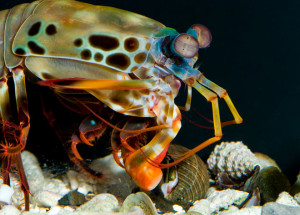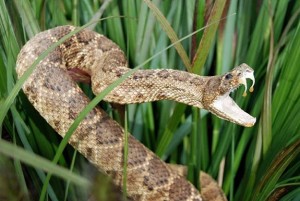For a lot of people like me, dogs are just a regular part of life. I grew up with at least two big dogs in the house at all times, and it just doesn’t feel like home without a big lovable slobber hound waiting for me when I walk in the door. Dogs are such a normal part of life here in America and all over the world, its easy to forget that these pooches all came from wolves. It is also very easy to forget that wild wolves are not dogs, something I have to remind myself of when I find myself 30 minutes into YouTube searching of wolf dogs. (I mean come on, who wouldn’t want this) When I was thinking about this, I realized that I have absolutely no idea how we went from the mighty wolf to the Chihuahua, and I was extremely surprised to find out that it is actually because of us.
have to remind myself of when I find myself 30 minutes into YouTube searching of wolf dogs. (I mean come on, who wouldn’t want this) When I was thinking about this, I realized that I have absolutely no idea how we went from the mighty wolf to the Chihuahua, and I was extremely surprised to find out that it is actually because of us.
The way that most species evolve over generations is through mutations in offspring that prove to be advantageous in its current environment. This mutation either helps the animal survive or makes it less likely to. If it survives, it passes this gene down to its offspring, and so on. The case of wolves becoming dogs is a bit different though. It started out with a small genetic mutation, making some wolves less prone to running away from a human (or anything it perceives as a threat) at a closer distance. Because of this, wolves would hang around camps where humans have settled, and feed off of any left overs or thrown away food, where other wolves would not get so close to the humans. This began a symbiotic relationship between wolves and humans. Eventually, humans began to take in these wolves slowly, seeing their potential as hunting partners and as protection. They would then breed the ones that were friendlier and more loyal, while not breeding the less desirable ones. This kind of artificial selection allowed humans to pick what qualities they liked in the wolves, and which they didn’t. For example, if they breed ten wolves, they then raise the puppies but only breed the friendliest 10% of those puppies, and so on. This process speeds up evolution exponentially, quickly leading to many different types of wolves that were fitted for their specific environment. In colder harsher climates, wolves with thicker coats would be preferred, whereas in warmer areas, shorter haired dogs were more useful. Some dogs were bred specifically for hunting, aka what became the retrievers, some dogs were bred for protection, German Sheppards and Rottweilers, and some just for companionship or warmth, poodles and many small dogs.
This kind of artificial selection allowed humans to pick what qualities they liked in the wolves, and which they didn’t. For example, if they breed ten wolves, they then raise the puppies but only breed the friendliest 10% of those puppies, and so on. This process speeds up evolution exponentially, quickly leading to many different types of wolves that were fitted for their specific environment. In colder harsher climates, wolves with thicker coats would be preferred, whereas in warmer areas, shorter haired dogs were more useful. Some dogs were bred specifically for hunting, aka what became the retrievers, some dogs were bred for protection, German Sheppards and Rottweilers, and some just for companionship or warmth, poodles and many small dogs.
Over thousands of years, as dogs spread out over the world with humans, they began to develop into all of the diverse breeds we see today as a result of the needs of the humans they were with.

 of a helping hand? The connection between humans and dolphins is one that goes back centuries, as far as the
of a helping hand? The connection between humans and dolphins is one that goes back centuries, as far as the  second most intelligent animals on earth, behind humans.
second most intelligent animals on earth, behind humans.  s apart from other ocean dwellers, be it
s apart from other ocean dwellers, be it 

 rium or a fish tank, and that is its club like arms it keeps folded below its body.
rium or a fish tank, and that is its club like arms it keeps folded below its body. 

 mediately come to mind. Lions, bears, tigers, sharks, and other large predatory animals, atop each of their respective food chains. While these animals are undoubtedly not to be taken lightly, none of them actually crack the top 5
mediately come to mind. Lions, bears, tigers, sharks, and other large predatory animals, atop each of their respective food chains. While these animals are undoubtedly not to be taken lightly, none of them actually crack the top 5  r areas in Asia and Africa, where proper medical treatment is very difficult to come by. Though there is a vaccine, rabies is so deadly because once someone is infected and shows any symptoms, it is fatal 99% of the time. In other words, if you cant get the vaccine beforehand, and you cant reach it directly after being exposed to rabies, there is nothing that can be done to stop it. It is also very easy to come in contact with a dog with rabies, or for your dog to come into contact with a wild animal with it, considering
r areas in Asia and Africa, where proper medical treatment is very difficult to come by. Though there is a vaccine, rabies is so deadly because once someone is infected and shows any symptoms, it is fatal 99% of the time. In other words, if you cant get the vaccine beforehand, and you cant reach it directly after being exposed to rabies, there is nothing that can be done to stop it. It is also very easy to come in contact with a dog with rabies, or for your dog to come into contact with a wild animal with it, considering  s is so deadly, because many areas of the world such as south Asia and Sub-Saharan Africa don’t have access to proper medicine or doctors, which means that these potentially preventable deaths happen very frequently, and often go unreported. These areas of Africa and Asia are also where many of the deadliest types of venomous snakes live, meaning that interaction between them and humans happen very often, making snakes an incredibly deadly animal.
s is so deadly, because many areas of the world such as south Asia and Sub-Saharan Africa don’t have access to proper medicine or doctors, which means that these potentially preventable deaths happen very frequently, and often go unreported. These areas of Africa and Asia are also where many of the deadliest types of venomous snakes live, meaning that interaction between them and humans happen very often, making snakes an incredibly deadly animal. an all wars in history
an all wars in history


 ed outside in the spring only to find everything covered in a thin layer of yellow dust.
ed outside in the spring only to find everything covered in a thin layer of yellow dust. nifer trees have survived virtually
nifer trees have survived virtually 

 ar fallout, would the landscape really turn to a barren wasteland filled with mutated creatures?
ar fallout, would the landscape really turn to a barren wasteland filled with mutated creatures?

 d about long-term effects from radiation and the very large number of other environmental contaminants that may induce mutations and transgenerational epigenetic modifications.” In other words, although there were no drastic initial mutations to any species, although the changed environment of radiation may cause long term mutations in species due to natural selection.
d about long-term effects from radiation and the very large number of other environmental contaminants that may induce mutations and transgenerational epigenetic modifications.” In other words, although there were no drastic initial mutations to any species, although the changed environment of radiation may cause long term mutations in species due to natural selection.











